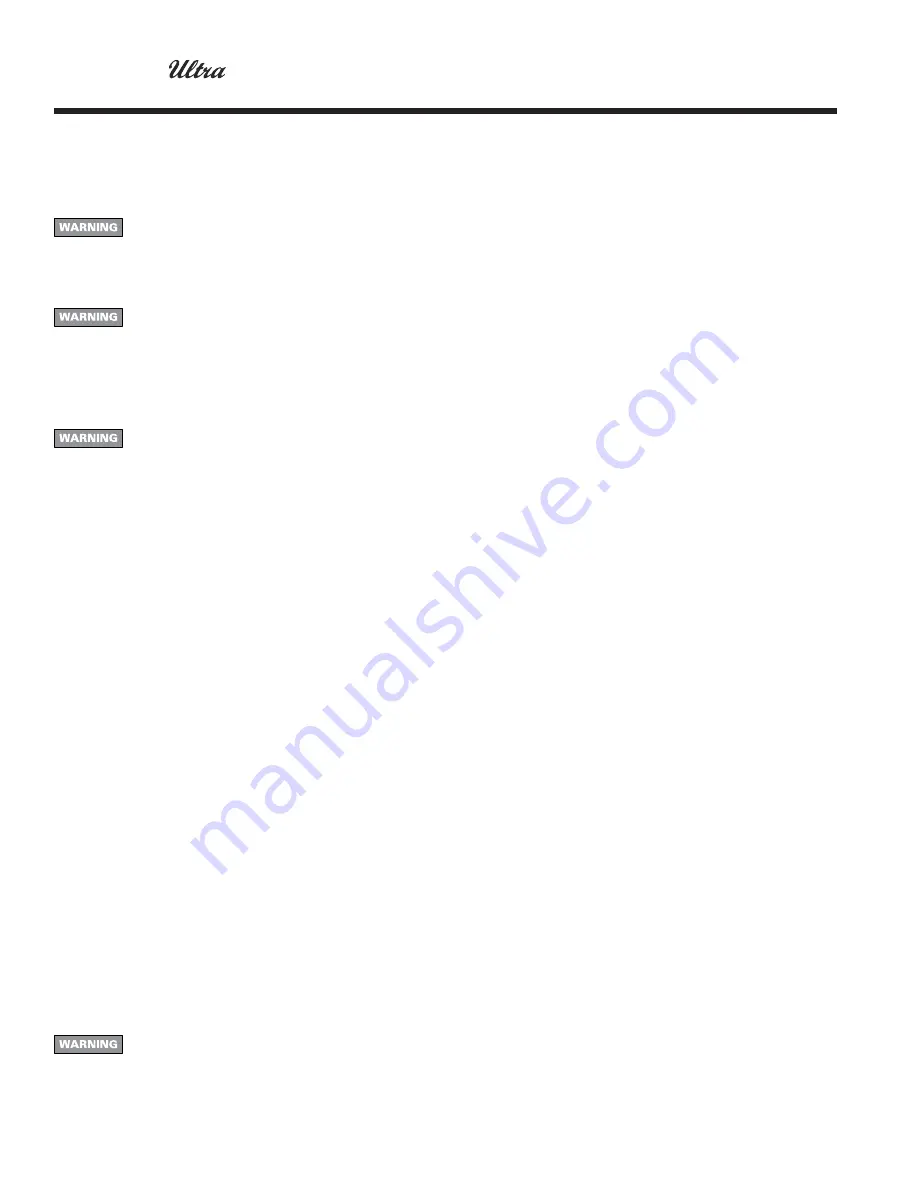
Part number 550-100-026/0404
GAS
-
FIRED
WATER
BOILER
SERIES
2 — Boiler Manual
24
Startup
(continued)
6
Final checks before starting boiler
❏
Read the Ultra Control Supplement to familiarize
yourself with Ultra PhD control module operation.
Read Operating Instructions in Control Supplement
for proper steps to start boiler.
❏
Verify the boiler and system are full of water and all
system components are correctly set for operation.
❏
Verify the preparation procedures of section 6,
pages 23 and 24 have been completed.
❏
Fill vent condensate trap with water (by removing
hose clamp and hose at PVC reducing elbow).
Replace hose on PVC reducing elbow and tighten
clamp.
❏
Verify electrical connections are correct and securely
attached.
❏
Inspect vent piping and air piping for signs of
deterioration from corrosion, physical damage or
sagging. Verify air piping and vent piping are intact
and correctly installed per Ultra Boiler Vent
Supplement.
To start the boiler
1. Turn OFF Power switch on Ultra display panel. Turn
on power to boiler.
2. Read and follow the Operating Instructions in the
Ultra Control Supplement.
If boiler does not start correctly
1. Check for loose connections, blown fuse or service
switch off?
2. Is external limit control (if used) open? Is boiler water
temperature above 200 °F?
3. Is thermostat set below room temperature?
4. Is gas turned on at meter or boiler?
5. Is incoming gas pressure less than 4" w.c. for natural
gas or 5” w.c. for propane?
6. Are parameters set correctly as instructed in the Ultra
Control Supplement?
If none of the above corrects the problem, refer to
Troubleshooting in the Ultra Control Supplement.
Check for gas leaks
Before starting the boiler, and during initial operation, smell
near the floor and around the boiler for gas odorant or any
unusual odor. Remove boiler front door and smell interior of
boiler enclosure. Do not proceed with startup if there is any
indication of a gas leak. Repair any leak at once.
DO NOT adjust or attempt to measure gas valve outlet pressure.
The gas valve is factory-set for the correct outlet pressure. This
setting is suitable for natural gas and propane, requiring no
field adjustment. Attempting to alter or measure the gas valve
outlet pressure could result in damage to the valve, causing
potential severe personal injury, death or substantial property
damage.
Propane boilers only — Your propane supplier mixes an
odorant with the propane to make its presence detectable. In
some instances, the odorant can fade, and the gas may no
longer have an odor. Before startup (and periodically
thereafter), have the propane supplier verify the correct odorant
level in the gas.
Check thermostat circuit(s)
1. Disconnect the two external wires connected to the boiler thermostat
terminals (low voltage terminal strip terminals 5 and 6).
2. Connect a voltmeter across these two incoming wires. Close each
thermostat, zone valve and relay in the external circuit one at a time and
check the voltmeter reading across the incoming wires.
3. There should NEVER be a voltage reading.
4. If a voltage does occur under any condition, check and correct the external
wiring. (This is a common problem when using 3-wire zone valves.)
5. Once the external thermostat circuit wiring is checked and corrected if
necessary, reconnect the external thermostat circuit wires to boiler low
voltage terminal strip terminals 5 and 6. Allow the boiler to cycle.
Inspect/fill condensate system
Inspect/check condensate lines and fittings
1. Inspect the condensate drain line, condensate PVC fittings and condensate
trap. (See page 20 for component locations.)
2. Pour water into the top of the boiler’s ½" PVC condensate tee and check
for any leaks in the condensate drain line or fittings. Repair any leaks.
Fill condensate trap with water
1. Loosen the hose clamp securing the right end of the condensate trap to
the PVC reducing elbow (see page 20).
2. Slide the trap hose end off of the elbow.
3. Fill the trap with fresh water to within a inch of the end of the hose.
4. Replace trap hose on PVC reducing elbow and tighten the hose clamp.
The condensate trap (page 3, item 23a) must be filled with water
during all times of boiler operation to avoid flue gas emission
from the condensate drain line. Failure to fill the trap could
result in severe personal injury or death.
















































